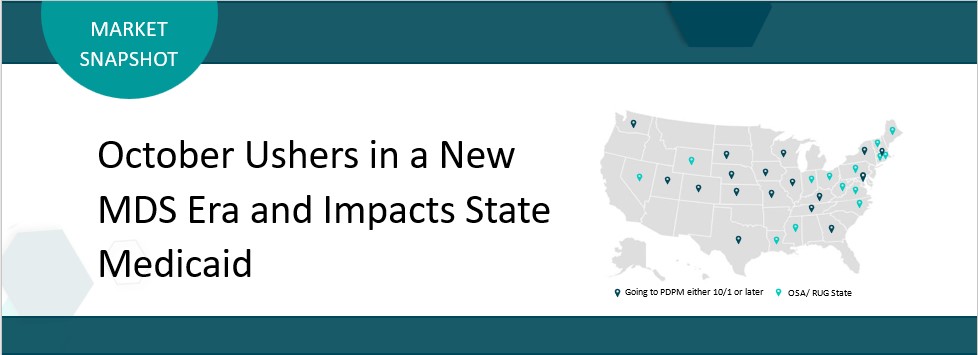PDPM is all the rage. But, is Managed Care the problem you can solve now?
Yes, PDPM is a big deal, which as I write this, seems like an understatement. RUGs have been around since the late 90s. However, consider your case mix trends today. According to the latest report by NIC, the market trend is more and more Managed Care and Medicaid and less traditional Medicare and Private pay.
And, the numbers won’t surprise many of us. Approximately 33% of Medicare participants are enrolled in managed MA plans and experts expect that number to increase. In fact, the Congressional Budget Office has predicted MA plans will grow by approximately 4% per year, while other experts predict that rate will be closer to 7%. Either way, there were more than 19 million enrollees in 2017, per the Kaiser Family Foundation, and it will continue to climb.
For Skilled Nursing operators, this means significant strain on staff resources, payment rates and cash flow. A quote from Ziegler’s most recent CFO Hotline report sums up the challenge well.
“Medicare Advantage plans are making it much more difficult to get paid a fair price for the services provided. They continue to add cumbersome processes making it more difficult for people needing services to receive those services,” which have added “additional costs and huge amounts of frustration,” one CFO noted in the survey.
Before the PDPM wave hits, it is important that operators take the time now to implement operational improvements to make Managed Care their best payer. Here are a few things to consider:
- Understand your contract drivers. MA contracts have become more and more complex. Each plan brings its own rules with specific inclusions, exclusions and rate schedules. Start by getting a handle on the nuances, understand the differences and create cheat sheets and summaries when possible to share with staff.
- Smooth out your internal workflows and data handoffs. Internal data sharing errors and communication inefficiencies can stymie any well intended process. If you intend to bill for a particular contract exclusions or request level changes, when in the process are you capturing that information? Whose responsible for the authorization and how is that communicated to billing? Now is the time to map out the workflow, minimize places for human error and shore up your internal communication.
- Don’t treat the insurance update, solely, as an administrative task. Too often operators get stuck in the weeds of being task oriented. While you’re compiling information to fax or email over to the payer, are you really taking the time to understand what’s going on with the patient, what services you’re providing and how that all aligns to the contracted care level? The update process can not only be an opportunity to communicate status, but a chance to advocate, make requests and develop a relationship with the insurance provider.
PDPM is still 12 months or more away and managed care isn’t going away. MA plans will continue to grow unabated and operate alongside PDPM using existing models of RUGs and Care Levels. Take the time now to focus on your managed care mix, while you have time, before the PDPM wave hits.




